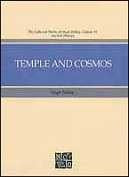FAIR Bookstore
The Collected Works of Hugh Nibley, Volume 12: Temple and Cosmos
The Collected Works of Hugh Nibley, Volume 12: Temple and Cosmos
Couldn't load pickup availability
The full title of this work is Temple and Cosmos: Beyond this Ignorant Present.
In this treatment of the temple and ancient temple symbolism, Nibley explores how the temple is a symbolic microcosm of relationships between this mortal life and the eternal worlds. From the beginning of time, the temple has been the link between the chaos and dissolution of this temporal world and the beauty and permanence of the eternal realms.
In Temple and Cosmos, Nibley explains the relationship of the House of the Lord to the cosmos. In the first part of the volume, Nibley focuses on the nature, meaning, and history of the temple. In the second part he discusses the cosmic context of the temple.
"Nibley's work on Temples, ancient and modern, is incredible. Many of the articles in this book were previously unpublished works. Others are from firesides and addresses at BYU and other places. All are generally aimed towards the LDS audience.
"Scholars have, in the last 10 years, expanded on many of Nibley's proposed ideas. Scholars, LDS and non-LDS, have found similar conclusions as Nibley has proposed and have expanded on them (as one example on Nibley's One Eternal Round see Mircea Eliade The Myth of the Eternal Return (Princeton: Princeton University Press, 1954) for more on "parallelism" see John M. Lundquist's The Temple: Meetingplace of Heaven and Earth and it's respective bibliography). Many students of temples of the ancient world would find few qualms with the conclusions expressed by Hugh Nibley as they relate to the temple.
"This book is mostly directed toward the LDS audience. Despite this it may be informative to the beginning non-LDS student of the temple (especially as seen by the LDS mind). Other books may be suggested but many of the conclusions would be the same."
—Kevin K. Winters, 2000
Share


